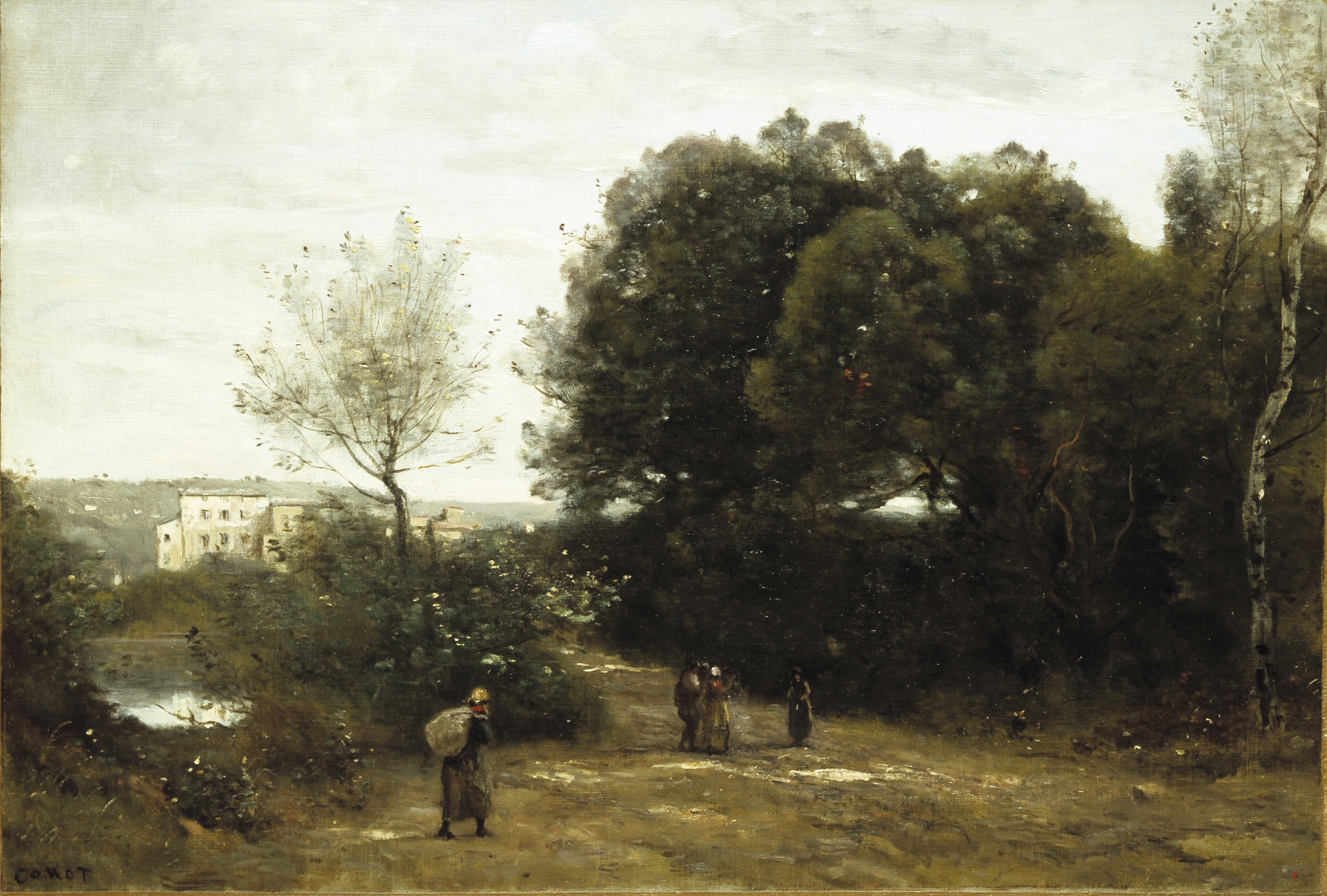Project Overview

Landscape with Figures, 1860
Jean-Baptiste-Camille Corot (1796-1875)
University of Denver Art Collections
This exhibition of works from the permanent collection of the Denver Art Museum is presented in partnership with “Changing Landscapes,” a student-curated exhibition at the University of Denver’s Victoria H. Myhren Gallery showing September 29 – November 13, 2011.
“Changing Landscapes” traces the development of landscape painting by artists of the late-19th century Barbizon movement in France and the Hudson River school in the United States. Themes researched by DU Museum Studies students included the use of the human figure, the practice of painting en plein air, the symbolism of animals, the emotional qualities of Tonalism, and the depiction of rural life during a time of industrialization and urban encroachment.
The University of Denver exhibition is accompanied by a catalog that features three student-written essays and illustrations of works from both venues. The Gallery acknowledges Timothy J. Standring, Gates Foundation Curator of Painting and Sculpture, and the staff of the Department of Painting & Sculpture at the Denver Art Museum for their support and collaboration.
The following interpretations are provided by students of the University of Denver’s Museum Studies program.
Jules Adolphe Aimé Louis Breton

The Gleaner, 1900
Jules Adolphe Aimé Louis Breton (1827-1906)
Denver Art Museum Collections, Gift of the Lawrence C. Phipps Foundation. 1958.112
Gleaning is the back-breaking task of gathering leftover crops from farmers’ fields. The woman hunched in the background works desperately for scraps of grain, while the woman in the foreground takes a moment to confront the viewer with a hardened stare. Her gaze and her posture are aggressive. Her hat is a Phrygian cap, or “bonnet rouge” – in France as early as 1790 a symbol of revolutionary spirit and national identity. As with Jean-Francois Millet’s The Gleaners, a defining image of peasant realism painted in 1857, Breton’s intent was to monumentalize those who represented the lowest ranks of rural society.
Breton was raised in the French countryside in a town called Courrières . After completing his formal art training in 1847 in Paris he moved back to his hometown in 1848 to care for his ailing father. His return inspired him to take a realist approach that depicted “peasant life and traditions, the working of the land and the glorification of those who worked it.”
Jean-Baptiste-Camille Corot

Landscape at Ville D’Avray, 1865-1870
Jean-Baptiste-Camille Corot (1796-1875)
Denver Art Museum Collections. 1958.117
A leading painter of the 19th century School in France, Jean-Baptiste-Camille Corot created more than 3,000 paintings in his lifetime and was a supportive mentor to many younger artists.
His choice of subject matter influenced other artists both in Europe and in the United States. Many artists like Corot became explorers, heading out of cities to decry urbanization yet unwittingly encouraging the urban populace to escape into the idealized rural areas they sought to memorialize.
Landscape at Ville D’Avray was painted ten miles west of Paris at the Ville d’Avray, near the Corot family country house. Over the years, Corot painted more than 150 landscapes at this location. Collectively they document the gradual suburbanization of his family’s beloved countryside.
Jean-Francois Millet

Peasants in a Field, nd
Jean-Francois Millet (1814 – 1875)
Denver Art Museum Collections, Gift of John and Jean Ritzenthaler. 1999.328
Jean-Francois Millet, the son of a peasant farmer in Normandy, was one of the primary artists of the Barbizon movement. Peasants in a Field illustrates the fusion of influences learned from earlier, classically-inspired artists like Nicolas Poussin with the “realist” style developed by Millet and other Barbizon artists.
In this work, the couple walks across the field casually yet with a sense of nobility at the beginning of their day’s work. The figures share a simple, monumental feeling with the figures in Les Becheurs (elsewhere in this display). The triangular composition is a classical motif often used by artists to convey a sense of strength and stability. The life of a 19th century French peasant was tied very closely to the fields; Millet places the figures within their natural context to provide a glimpse of their hard but dignified lives.
